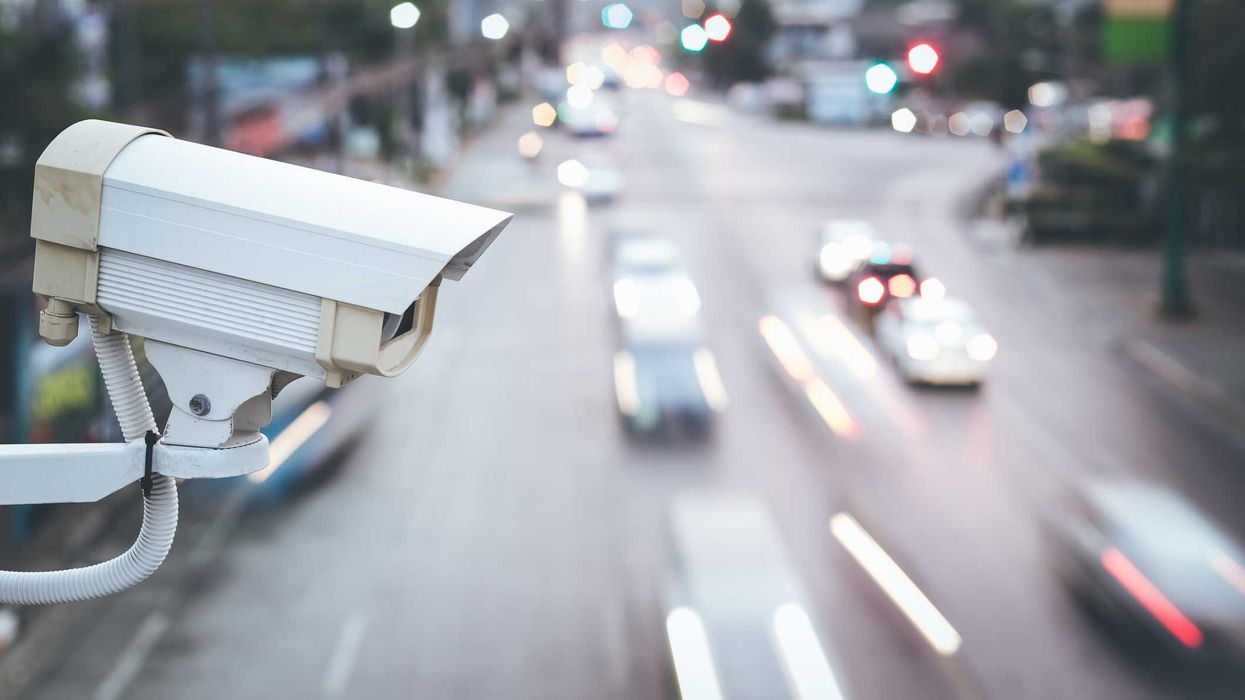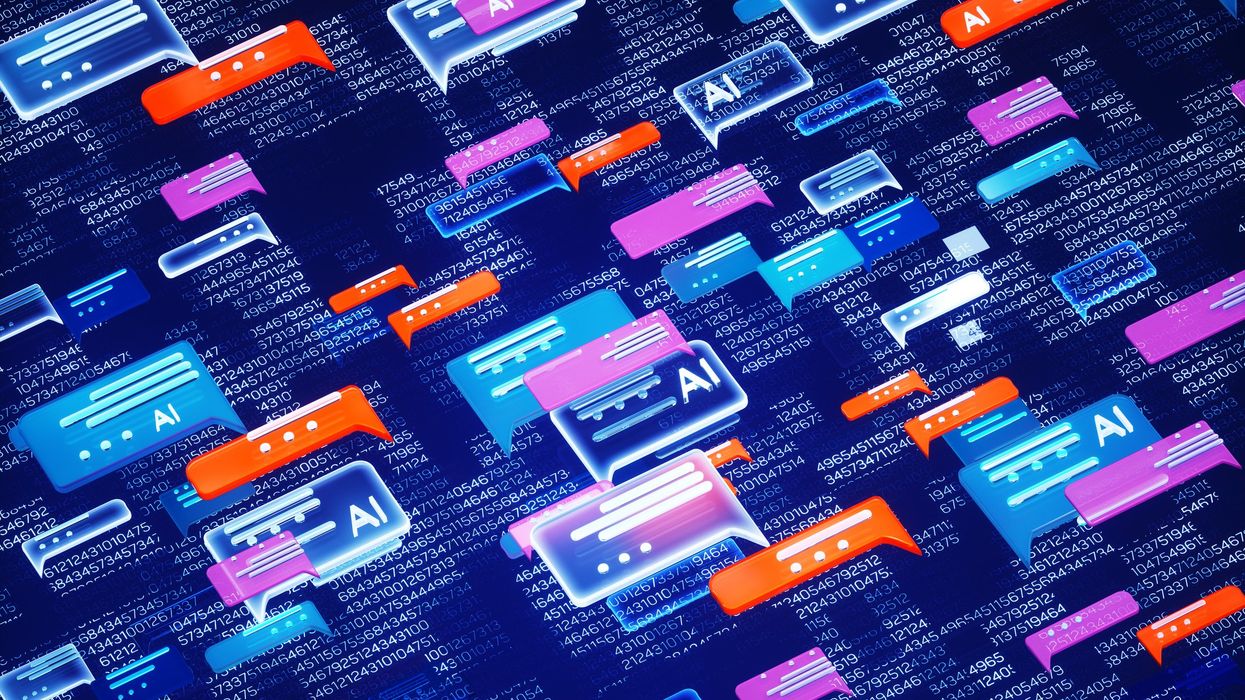Every day, I ride my bike down my block in Milan, a tight-knit residential neighborhood in central New Orleans. And every day, a surveillance camera follows me down the block.
Despite the rosy rhetoric of pro-surveillance politicians and facial recognition vendors, that camera doesn’t make me safer. In fact, it puts everyone in New Orleans at risk.
On Aug. 21, a live facial recognition ordinance was withdrawn by the New Orleans City Council, after months of community organizations fighting back and loudly opposing this dangerous ordinance. A council member's office confirmed that it was removed, pending edits, suggesting that a new one will be introduced. If this or a similar surveillance ordinance is approved, Louisiana would become the first state in the nation with a city-wide biometric surveillance network capable of tracking hundreds of thousands of residents in real time.
That’s not a step we want to take. Once invasive surveillance technology like that ends up in the hands of the government, there are no guardrails or oversight mechanisms powerful enough to protect our freedom and our privacy from bad actors, corrupt politicians, hackers, and anyone who doesn’t have our best interest at heart.
Expanding real-time facial recognition to all city cameras would set an unprecedented shift in mass surveillance for the whole country. It would build the infrastructure for a database that would record our facial features, personal characteristics, and our whereabouts, every time we stepped outside our front doors. All of that data, even if eventually deleted, can be used to train artificial intelligence to get better at recognizing and tracking us over time.
Disturbingly, a collection of cameras positioned across New Orleans is already capable of tracking residents’ every move, recording our data, and trying to match our faces to databases of millions of images of people. These cameras were never approved by the people of New Orleans. They were set up by Project NOLA, a crime prevention nonprofit group, which we now know because of bombshell revelations in the Washington Post. Project NOLA has been secretly spying on New Orleans residents with live facial recognition cameras for years. These cameras are at undisclosed locations around the city, and most importantly, police use of this technology has been outlawed since the local community rallied behind a surveillance ban in 2021.
Enough is enough. Time and again, New Orleans has been used as a testing ground for disempowering programs against our Black and brown communities––not only for secretive racist mass surveillance tech but also for a racist charter school system that has deteriorated our youth’s education. We have been treated as a sacrifice zone for oil, gas, and plastic plants to destroy our ecosystem and poison our health, causing us to have the highest rates of cancer in the country. We are not guinea pigs, and we are not disposable.
As an immigrant, I am desperately sounding the alarm about how devastating this surveillance ordinance would be for all New Orleaneans, including our migrant communities. All over the country, our people are being snatched off the street, our families are being separated, and in New Orleans, even our U.S. citizen babies with cancer are being deported. If we roll out real-time facial recognition in New Orleans, we have to expect that our facial recognition data will be demanded by ICE, requested by Louisiana police, or even hacked by anti-immigrant groups—empowering Trump’s agenda of terrorizing and violating our immigrant communities' fundamental human rights.
Instead of doubling down and investing in costly, racist technology, we should refocus on the root causes of crime and harm. 26% of all adults in New Orleans have low literacy levels. At 22.6%, our poverty rate dwarfs the national average of 10%. Dystopian face surveillance doesn’t solve those problems, but it does put us all at risk. The good news is we already know how to do better. Just last week, The Advocate editorialized about the many community programs and nonprofit efforts that are successfully reducing crime in Louisiana year by year.
Our elected officials have a duty to their constituents: to protect our freedoms, defend our dignity, and keep us safe. Our problems can’t be solved with more cameras and surveillance; they have deep systemic roots that have to be addressed.
Edith Romero is a Honduran community organizer with Eye On Surveillance, a researcher, writer, and a Public Voices fellow of The OpEd Project, The National Latina Institute for Reproductive Justice, and the Every Page Foundation.




















A deep look at how "All in the Family" remains a striking mirror of American politics, class tensions, and cultural manipulation—proving its relevance decades later.
All in This American Family
There are a few shows that have aged as eerily well as All in the Family.
It’s not just that it’s still funny and has the feel not of a sit-com, but of unpretentious, working-class theatre. It’s that, decades later, it remains one of the clearest windows into the American psyche. Archie Bunker’s living room has been, as it were, a small stage on which the country has been working through the same contradictions, anxieties, and unresolved traumas that still shape our politics today. The manipulation of the working class, the pitting of neighbor against neighbor, the scapegoating of the vulnerable, the quiet cruelties baked into everyday life—all of it is still here with us. We like to reassure ourselves that we’ve progressed since the early 1970s, but watching the show now forces an unsettling recognition: The structural forces that shaped Archie’s world have barely budged. The same tactics of distraction and division deployed by elites back then are still deployed now, except more efficiently, more sleekly.
Archie himself is the perfect vessel for this continuity. He is bigoted, blustery, reactive, but he is also wounded, anxious, and constantly misled by forces above and beyond him. Norman Lear created Archie not as a monster to be hated (Lear’s genius was to make Archie lovable despite his loathsome stands), but as a man trapped by the political economy of his era: A union worker who feels his country slipping away, yet cannot see the hands that are actually moving it. His anger leaks sideways, onto immigrants, women, “hippies,” and anyone with less power than he has. The real villains—the wealthy, the connected, the manufacturers of grievance—remain safely and comfortably offscreen. That’s part of the show’s key insight: It reveals how elites thrive by making sure working people turn their frustrations against each other rather than upward.
Edith, often dismissed as naive or scatterbrained, functions as the show’s quiet moral center. Her compassion exposes the emotional void in Archie’s worldview and, in doing so, highlights the costs of the divisions that powerful interests cultivate. Meanwhile, Mike the “Meathead” represents a generation trying to break free from those divisions but often trapped in its own loud self-righteousness. Their clashes are not just family arguments but collisions between competing visions of America’s future. And those visions, tellingly, have yet to resolve themselves.
The political context of the show only sharpens its relevance. Premiering in 1971, All in the Family emerged during the Nixon years, when the “Silent Majority” strategy was weaponizing racial resentment, cultural panic, and working-class anxiety to cement power. Archie was a fictional embodiment of the very demographic Nixon sought to mobilize and manipulate. The show exposed, often bluntly, how economic insecurity was being rerouted into cultural hostility. Watching the show today, it’s impossible to miss how closely that logic mirrors the present, from right-wing media ecosystems to politicians who openly rely on stoking grievances rather than addressing root causes.
What makes the show unsettling today is that its satire feels less like a relic and more like a mirror. The demagogic impulses it spotlighted have simply found new platforms. The working-class anger it dramatized has been harvested by political operatives who, like their 1970s predecessors, depend on division to maintain power. The very cultural debates that fueled Archie’s tirades — about immigration, gender roles, race, and national identity—are still being used as tools to distract from wealth concentration and political manipulation.
If anything, the divisions are sharper now because the mechanisms of manipulation are more sophisticated, for much has been learned by The Machine. The same emotional raw material Lear mined for comedy is now algorithmically optimized for outrage. The same social fractures that played out around Archie’s kitchen table now play out on a scale he couldn’t have imagined. But the underlying dynamics haven’t changed at all.
That is why All in the Family feels so contemporary. The country Lear dissected never healed or meaningfully evolved: It simply changed wardrobe. The tensions, prejudices, and insecurities remain, not because individuals failed to grow but because the economic and political forces that thrive on division have only become more entrenched. Until we confront the political economy that kept Archie and Michael locked in an endless loop of circular bickering, the show will remain painfully relevant for another fifty years.
Ahmed Bouzid is the co-founder of The True Representation Movement.